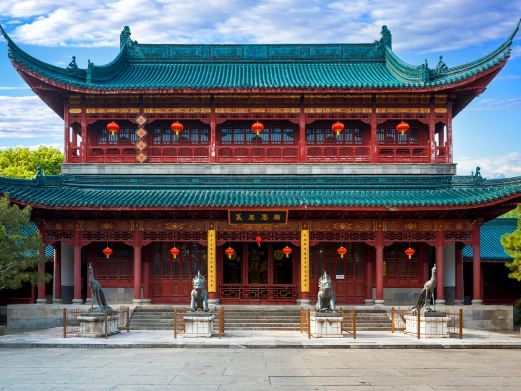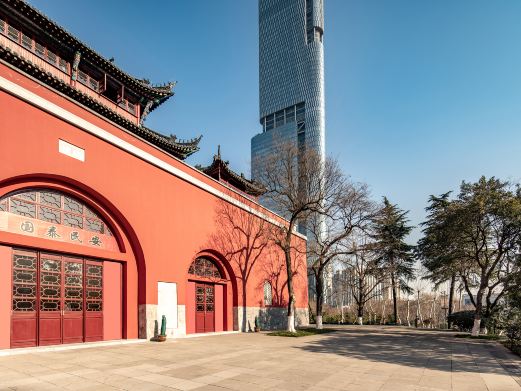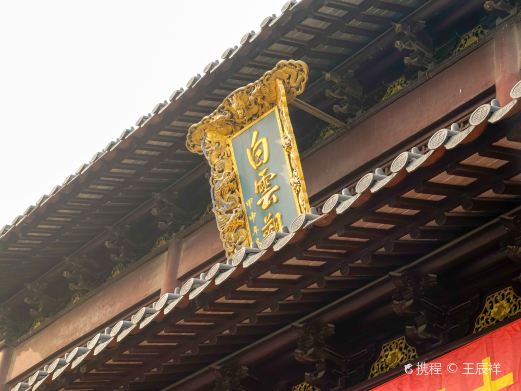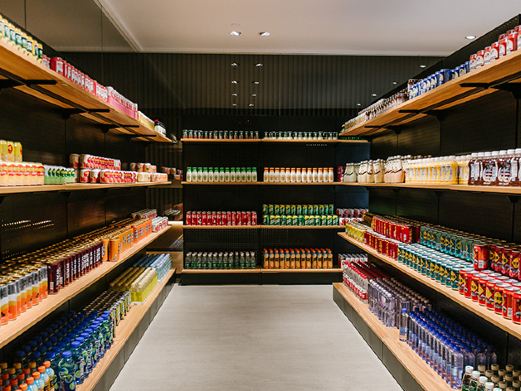Longchang Temple is located on Mount Baohua, approximately 30 kilometers away from Nanjing, Zhenjiang, and Jurong, and is the main attraction of the mountain. The temple was originally established in the first year of the Tianjian era of the Southern Dynasties Liang Dynasty (AD 502), with the founding ancestor being Bao Zhi, the prototype of the legendary monk Ji Gong. It once had an extremely large scale, known as having 999 and a half rooms, and still has more than 500 rooms today.
Longchang Temple is renowned for its San Tan Da Jie, making it one of the largest platforms for Buddhist precepts in China today. A precept certificate from Longchang Temple is akin to a graduation diploma from Peking University or Tsinghua University, and Mount Baohua, where the temple is located, has earned the reputation of being the ‘Number One Mountain of the Vinaya School’. The mountain road of Mount Baohua leads directly to the gate of Longchang Temple. It is convenient to drive to Longchang Temple, and when purchasing an entrance ticket, a parking ticket is also required: 10 yuan per small vehicle (under 15 seats) and 15 yuan per large vehicle. Non-driving tourists can take a sightseeing bus within the scenic area for 10 yuan one way, or walk up to Longchang Temple, which takes about 30-40 minutes from the foot of the mountain.The main gate of Longchang Temple faces north, with a series of horse-head walls connected, featuring Huizhou architectural style. Two ancient ginkgo trees stand tall at the entrance, and a statue of Guanyin stands in the Ji Gong Pond. The layout of Longchang Temple is different from other temples, with the main buildings not arranged along the central axis, which is related to its role as a platform for Buddhist precepts.
Inside the temple, one can see monks and nuns living together, similar to male and female classes in schools. Turning right from the main gate into a quadrangle, the main buildings surround a circle, with the Dabei Lou (Veitade Hall) on the south side, which contains a series of colorful murals; the Mahavira Hall is on the north side; next to the Mahavira Hall is the Dharma Hall (Abbot’s Chamber), where it is said that Emperor Qianlong sat on the abbot’s chair and desk during his southern tour; the east and west wings are monastic rooms, which visitors can tour, resembling university dormitories. Turning left from the main gate, there are two points of interest. One is the five large pots in the eastern room, built during the Qing Guangxu period, with the largest pot having a mouth diameter of 2 meters and a depth of 1 meter, allowing one to imagine the grand scene of thousands of monks eating together in the temple’s heyday. The other is the white marble platform for precepts in the northern room, which is also the essence of the entire temple, built during the Qing Kangxi period, with exquisite carvings all around. Since the Qing Dynasty, hundreds of thousands of monks have received precepts on it. Walking along the bluestone steps and passing through the winding stone alleys, one arrives at the Copper Hall and the Hall Without Beams on the hillside, which is the third point of interest at Longchang Temple. The Copper Hall stands in the center, built in the 33rd year of the Wanli period of the Ming Dynasty (AD 1605), with two Halls Without Beams built in the same year as the Copper Hall, standing on both sides, all made of blue bricks, without beams or pillars, and with beautiful patterns on the architectural structures. Standing here and looking back at the temple, the horse-head walls and roofs are arranged in an orderly manner, providing a good angle for photography. Every October, generally from October 8th to October 18th, Longchang Temple holds the San Tan Da Jie, accepting both male and female followers. Tourists can watch, but must respect Buddhist etiquette and avoid making loud noises or pointing.
The Baoyue Zhai at the entrance of the temple offers vegetarian meals, with the vegetarian noodles being particularly delicious, priced at around 20 yuan.
The temple is open all year round from 08:00 to 17:00.
Essential Tips: Although Longchang Temple is administratively part of Jurong City, it is more accessible when traveling from Zhenjiang or Nanjing by heading directly towards Baohua Town, rather than towards Jurong, which would involve a detour.










